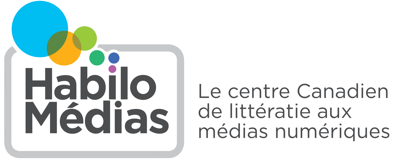English 9-10
English 9 Open (ENL1W)
Digital Media Literacy in English 9-10
The Grade 9 English course released in 2023 is based in part on the principle that “a modern English curriculum reflects emerging technologies and their impact on communication and digital media literacy,” which is defined as combining “the ability to combine the multimodal properties of media literacy with the technological capabilities of digital literacy.”
As well, the course “adopts a strong focus on the foundational knowledge and skills that students need in order to establish a strong basis for language and literacy learning in the senior grades. Acquiring the knowledge and skills described in this course will enable students to understand, respond to, appreciate, and create a full range of texts in various forms, genres, modes, and media, including digital and media texts. The attention paid to the diverse text forms, genres, modes, and media used to communicate meaning in various contexts and communities is considered essential to a robust English and literacy program.“ The curriculum also “stresses the development of critical thinking skills to enable students to understand, appreciate, and evaluate texts at a deep level and to connect them to the real world.”
The course is divided into four strands:
A. Literacy Connections and Applications
B. Foundations of Language
C. Comprehension: Understanding and Responding to Texts
D. Composition: Expressing Ideas and Creating Texts
There are connections to digital media literacy in strands A, C and D. Strand A also contains a dedicated Digital Media Literacy expectation that connects to every topic in MediaSmarts’ Digital Media Literacy Framework:
Students develop and apply digital media literacy knowledge and skills to support their learning. They learn about their rights and responsibilities when interacting online and developing their digital identity, learn to navigate online environments while managing their data, security, and privacy, including seeking appropriate permission, and use digital and media tools to evaluate information and demonstrate their learning. They learn and apply the conventions and techniques of digital and media texts and analyze the relationship between text forms and content, audiences, and creators. They use digital and media tools in the design process to develop innovative solutions. Students learn how to interact and contribute to an empathetic, respectful, and inclusive online community.
English 10 (2007)
Strands in English
The expectations in the compulsory courses of the English curriculum are organized in four strands, or broad areas of learning: Oral Communication, Reading and Literature Studies, Writing, and Media Studies. The program in all grades is designed to develop a range of essential skills in these four interrelated areas, built on a solid foundation of knowledge of the conventions of standard English and incorporating the use of analytical, critical, and metacognitive thinking skills.
Media Studies Strand
The Ontario Grades 9-10 curriculum states that whereas traditional English language study may be seen to focus primarily on the understanding of the word, media studies focuses on the construction of meaning through the combination of several media “languages” – images, sounds, graphics, and words.
Media Studies explores the impact and influence of mass media and popular culture by examining texts such as films, songs, video games, action figures, advertisements, CD covers, clothing, billboards, television shows, magazines, newspapers, photographs, and Web sites. These texts abound in our electronic information age, and the messages they convey, both overt and implied, can have a significant influence on students’ lives. For this reason, critical thinking as it applies to media products and messages assumes a special significance. Understanding how media texts are constructed and why they are produced enables students to respond to them intelligently and responsibly. Students must be able to differentiate between fact and opinion; evaluate the credibility of sources; recognize bias; be attuned to discriminatory portrayals of individuals and groups, such as religious or sexual minorities, people with disabilities, or seniors; and question depictions of violence and crime.
To develop their media literacy skills, students should have opportunities to view, analyse, and discuss a wide variety of media texts and relate them to their own experience. They should also have opportunities to use available technologies to create media texts of different types (e.g., computer graphics, cartoons, graphic designs and layouts, radio plays, short videos, Web pages).
This strand focuses on helping students develop the skills required to understand, create, and critically interpret media texts. It examines how images (both moving and still), sound, and words are used, independently and in combination, to create meaning. It explores the use and significance of particular conventions and techniques in the media and considers the roles of the viewer and the producer in constructing meaning in media texts. Students apply the knowledge and skills gained through analysis of media texts as they create their own texts.
The Ontario Curriculum Grades 9-10 English, 2007.
Ontario Ministry of Education and Training
